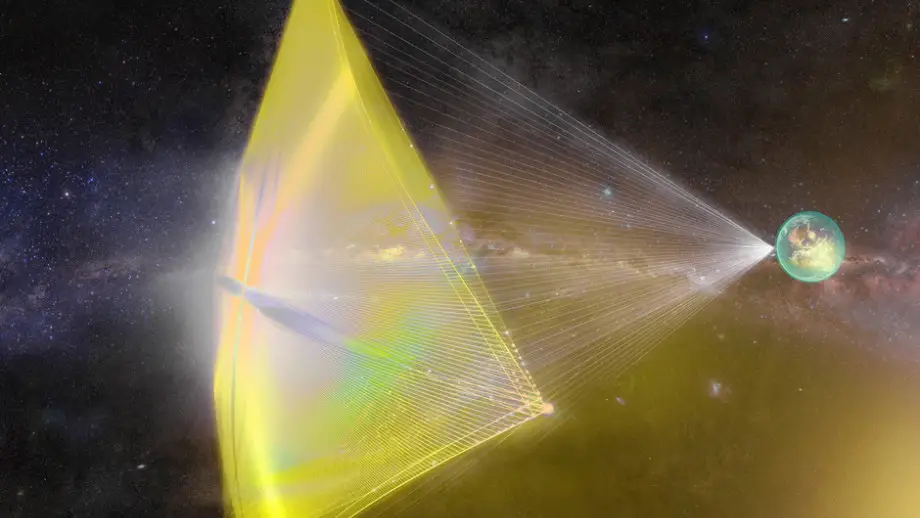The mission to Alpha Centauri within a human lifetime, once a dream, is now a realistic goal, promising a new era of interstellar exploration and scientific discovery.

Table of Contents
The Dream of Interstellar Travel
The dream of a mission to Alpha Centauri within a human lifetime has been a staple of science fiction for decades. However, with the current pace of technological advancement, this dream is becoming increasingly realistic. The nearest star and planetary system to Earth, Alpha Centauri, is 4.37 light-years away. With current technology, it would take a human about 6,000 years to get there. But what if we could reduce this to decades?
Watch it as a video instead of reading:
The Breakthrough Initiatives
The Breakthrough Initiatives have been exploring the possibility of reducing the travel time to Alpha Centauri from thousands of years to mere decades. This would potentially allow the scientists who launch the mission to live to see the results. A new paper, published in the Journal of the Optical Society of America B, shows that one of the major obstacles for such a project can be overcome with existing technology.
The Challenge of Acceleration
The more massive an object is, the harder it is to accelerate it, particularly as you approach the speed of light. This represents a major problem for any spacecraft carrying its own fuel. “To cover the vast distances between Alpha Centauri and our own Solar System, we must think outside the box and forge a new way for interstellar space travel,” Dr Chathura Bandutunga of the Australian National University said in a statement.
Astronomers Discover A Giant Structure Hidden Behind Our Galaxy
The Concept of Laser Propulsion
The idea of using lasers to provide the necessary push for a mission to Alpha Centauri within a human lifetime has been around for decades. This concept is now being explored more seriously as part of Breakthrough Starshot. The project aims to use powerful lasers located on the ground to propel a lightweight spacecraft on its voyage.

Overcoming Atmospheric Distortion
One of the challenges to making laser propulsion work is atmospheric distortion. The same distortions that affect incoming light also affect laser light sent upwards, potentially preventing lasers from applying the force necessary to push a spacecraft on its way. However, the adaptive optics used by telescopes to compensate for atmospheric distortion can be used in reverse. A small satellite-mounted laser pointed down to Earth can be used to measure atmospheric effects in real-time, allowing the ground-based lasers to adjust and keep their focus securely on the space probe.
Power Requirements for the Mission To Alpha Centauri Within A Human Lifetime
The power requirements for these lasers to transmit to the craft are immense, estimated at 100GW. To put this into perspective, the entire United States uses an average of 450 GW of electricity at any one time. However, the authors of the paper are undaunted. They propose a system that stores energy built up over several days and releases it suddenly, operating at full power for just 10 minutes.

The Journey to Alpha Centauri
Once the lasers switch off, the spacecraft would be traveling at about 20 percent of the speed of light. Slowed only insignificantly by the Sun’s gravity and the interstellar medium, the craft could reach Alpha Centauri in around 22 years, although its transmissions would take another four years to reach us. This makes the mission to Alpha Centauri within a human lifetime a realistic possibility.
The Future of Interstellar Travel
The discovery of a feasible method for a mission To Alpha Centauri within a human lifetime is a significant step towards making interstellar travel a reality. While there are still many challenges to overcome, such as ensuring the probe doesn’t melt from the intense laser power, the progress made so far is promising. The dream of reaching the stars within a humanlifetime is no longer confined to the realm of science fiction. As we continue to innovate and push the boundaries of what is possible, we may soon be able to explore distant star systems and potentially discover new worlds. The Mission to Alpha Centauri Within A Human Lifetime represents a new frontier in our quest to understand the universe and our place within it.
The Potential of Laser Propulsion
The concept of using lasers to propel a spacecraft is not new, but the idea has gained traction in recent years due to advancements in laser technology. The lasers for the mission to Alpha Centauri within a human lifetime would need to be incredibly powerful, capable of delivering a concentrated beam of light to a small spacecraft millions of miles away. This would require a significant amount of energy, but the researchers believe that this can be achieved by storing energy over several days and releasing it all at once.
The Design of the Spacecraft
The spacecraft for the mission to Alpha Centauri within a human lifetime would need to be lightweight yet durable enough to withstand the intense laser beam. It would also need to be equipped with a nearly perfect mirror to reflect 99.99 percent of the light falling on it, doubling the momentum transfer and reducing heat. This would allow the spacecraft to reach incredible speeds, enabling it to reach Alpha Centauri in a matter of decades.
The Challenges Ahead
While the researchers have made significant strides in overcoming some of the major obstacles for the mission to Alpha Centauri within a human lifetime, several challenges remain. One of the biggest challenges is ensuring that the spacecraft doesn’t melt from the intense laser power. Another challenge is the development of a power source capable of generating the massive amount of energy required for the lasers. Despite these challenges, the researchers remain optimistic about the potential of the mission.
The Significance of the Mission To Alpha Centauri Within A Human Lifetime
The mission to Alpha Centauri within a human lifetime Lifetime represents a significant milestone in human space exploration. It would not only be the first mission to another star system, but it would also be the first mission that could potentially be completed within a human lifetime. This would allow the scientists who launch the mission to live to see the results, a prospect that is incredibly exciting for the scientific community.
The Future of Space Exploration
The mission to Alpha Centauri within a human lifetime is just one example of how space exploration is evolving. As technology continues to advance, we are finding new and innovative ways to explore the cosmos. Whether it’s through the use of powerful lasers, advanced spacecraft, or new methods of propulsion, the future of space exploration is full of exciting possibilities. The dream of reaching the stars within a human lifetime is becoming increasingly realistic, and it’s only a matter of time before we make it a reality.
Conclusion: The Journey Ahead
The journey to Alpha Centauri will be a monumental undertaking, but the potential rewards are immense. Not only would it be a testament to human ingenuity and the power of technology, but it could also open up new avenues for scientific discovery. The mission to Alpha Centauri within a human lifetime is more than just a dream; it’s a goal that scientists and researchers around the world are tirelessly working towards. And with each new breakthrough, we move one step closer to making this dream a reality.
Reference(s):

